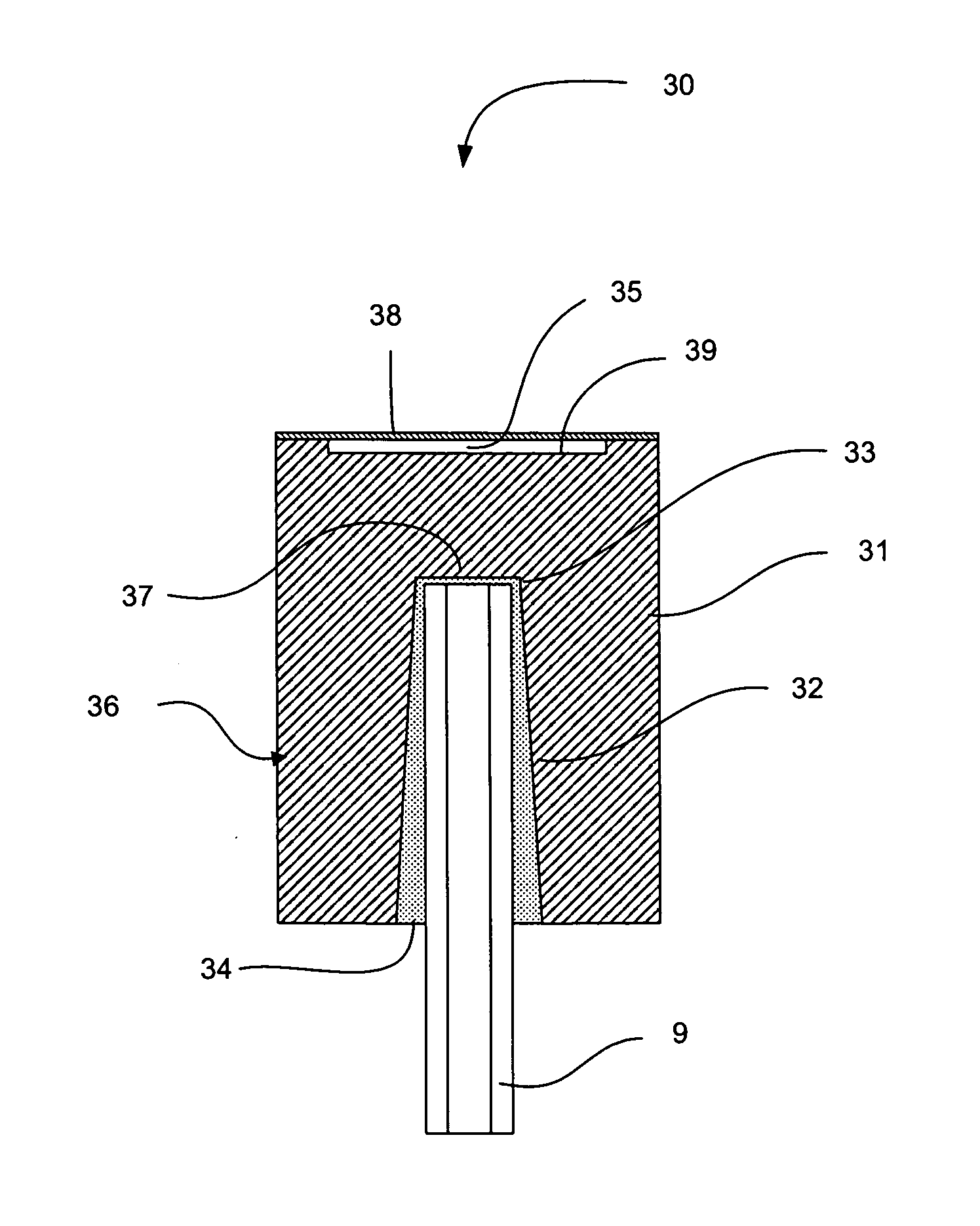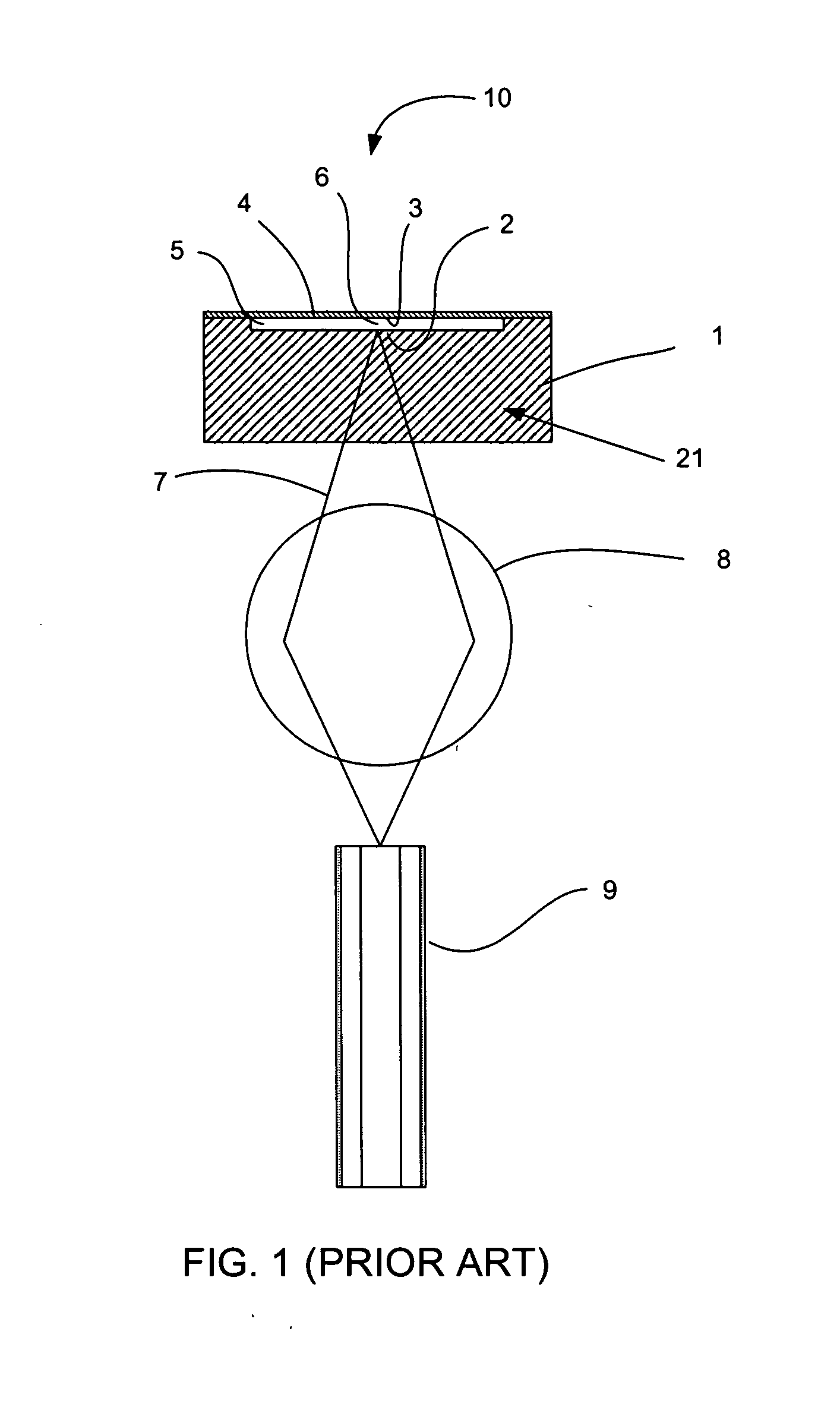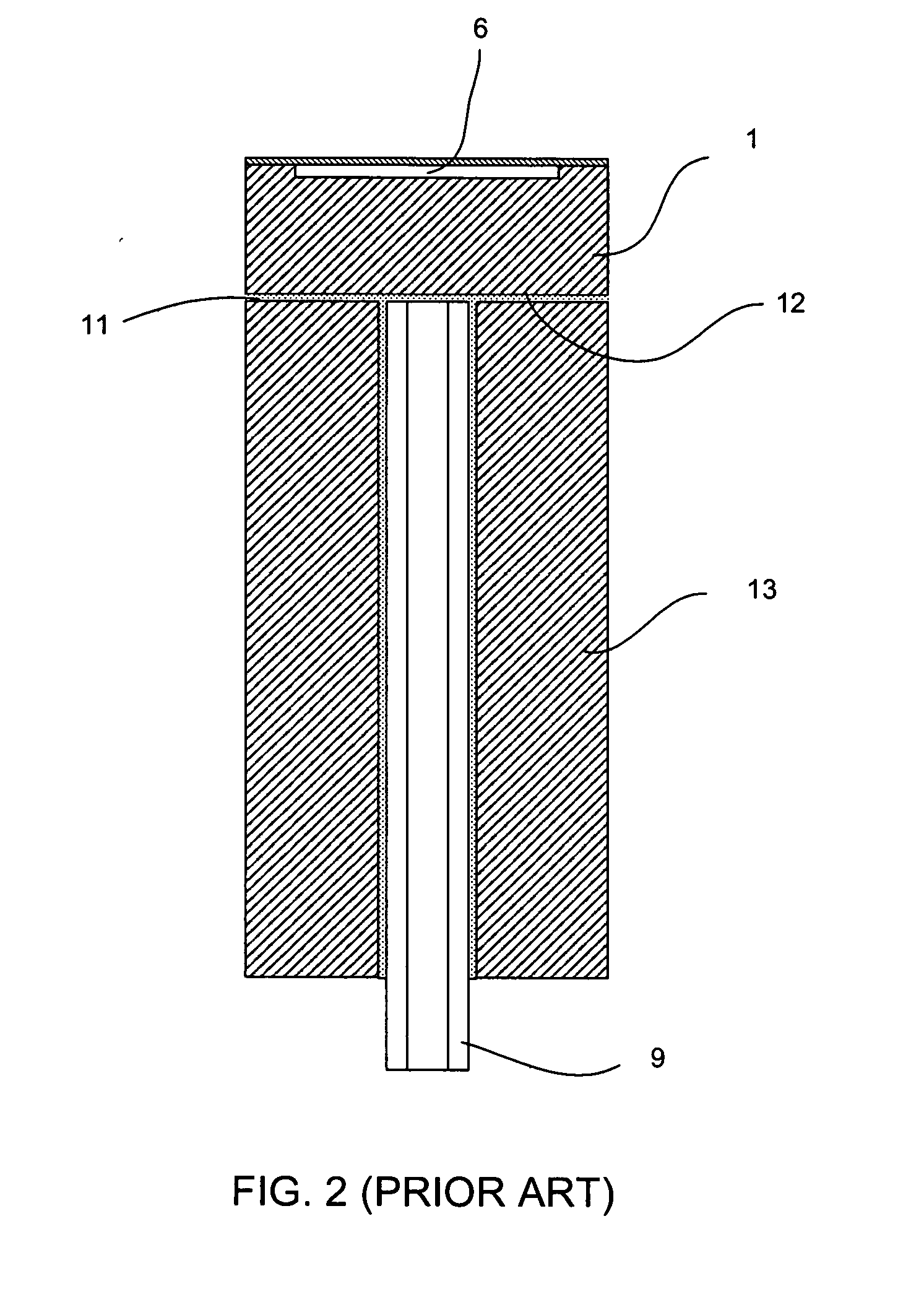Fiber optic pressure sensor for catheter use
a fiber optic and pressure sensor technology, applied in optics, instruments, catheters, etc., can solve the problems of poor compatibility with actual catheter design, strong influence on the fidelity of pressure measurement, and limited use, and achieve low thermal shift, high fidelity measurement, and low cost
- Summary
- Abstract
- Description
- Claims
- Application Information
AI Technical Summary
Benefits of technology
Problems solved by technology
Method used
Image
Examples
Embodiment Construction
[0037] In the following description of the embodiments, references to the accompanying drawings are by way of illustration of an example by which the invention may be practiced. It will be understood that other embodiments may be made without departing from the scope of the invention disclosed.
[0038] Referring now to FIG. 4, there is shown a fiber optic Fabry-Perot pressure sensor 30, in accordance with a first embodiment of the present invention that is less sensitive to moisture induced drift then prior designs. The sensor 30 comprises a pressure chip 36 that is coupled to an optical fiber 9. The pressure chip 36 comprises a recessed cavity 39 covered by a diaphragm 38 forming the Fabry-Perot cavity 35. By way of non limiting example, a glass substrate 31 500 microns in thickness is first drilled with tiny holes 33 accommodating the fiber optic 9 to a thickness of 300 microns. It is understood by those skilled in the art that other combination of glass substrate thickness and dri...
PUM
 Login to View More
Login to View More Abstract
Description
Claims
Application Information
 Login to View More
Login to View More - R&D
- Intellectual Property
- Life Sciences
- Materials
- Tech Scout
- Unparalleled Data Quality
- Higher Quality Content
- 60% Fewer Hallucinations
Browse by: Latest US Patents, China's latest patents, Technical Efficacy Thesaurus, Application Domain, Technology Topic, Popular Technical Reports.
© 2025 PatSnap. All rights reserved.Legal|Privacy policy|Modern Slavery Act Transparency Statement|Sitemap|About US| Contact US: help@patsnap.com



